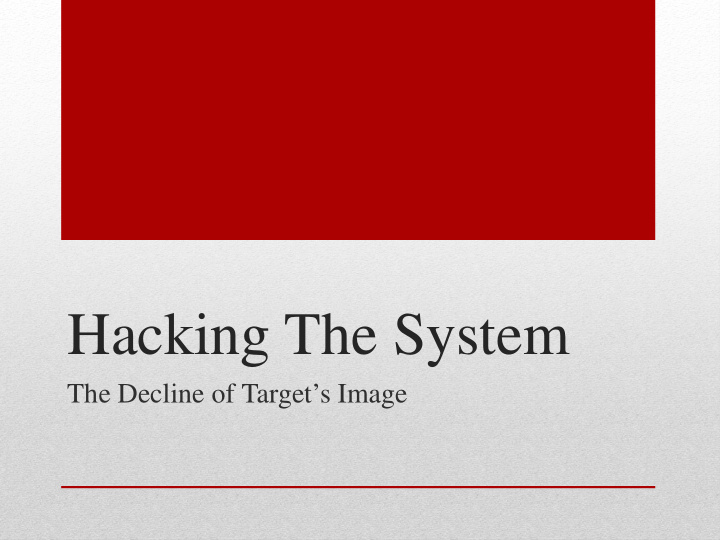



Hacking The System The Decline of Target’s Image
Metanarration Response Image Restoration Theory: Strategy: Corporations embroiled in a crisis can use message strategies to restore a positive image Organizations seek to manage and (Benoit, 2000). influence primary & reconstruct secondary public narratives surrounding a crisis (Venette, Sellnow, & Lange, 2003). Five rhetorical strategies to restore damaged reputations: Denial Evading Responsibility Reducing Offensiveness: ~Bolstering ~Minimization ~Differentiation ~Transcendence ~Attacking one’s accuser ~ Compensation Corrective Action Mortification
First Phase: December 19-20, 2013 Information leaked concerning data breach Target released statement confirming 40 million credit & debit cards accounts impacted from November 27-December 15, 2013 Reassured customers issue was resolved Second Phase: December 20-27, 2013 Reports surfaced PINS, CVV, card expiration dates, & personal data stolen Target denied that the was information stolen Target offered free credit reporting & 10% discount in stores December 27: Announced that PIN & CVV codes were part of the cyber attack Third Phase: December 28- January 10, 2014 Reports continued to surface about personal data being stolen Target denied that personal information stolen January 10: Announced that personal data was breached and 70 million additional customers were hacked
First Phase: December 19-20, 2013 Evading Responsibility Reducing Perceived Offensiveness- Minimization Second Phase: December 20-27, 2013 Reducing Perceived Offensiveness-Minimization & Compensation Third Phase: December 28- January 10, 2014 Reducing Perceived Offensiveness- Minimization Mortification Corrective Action
Recommend
More recommend